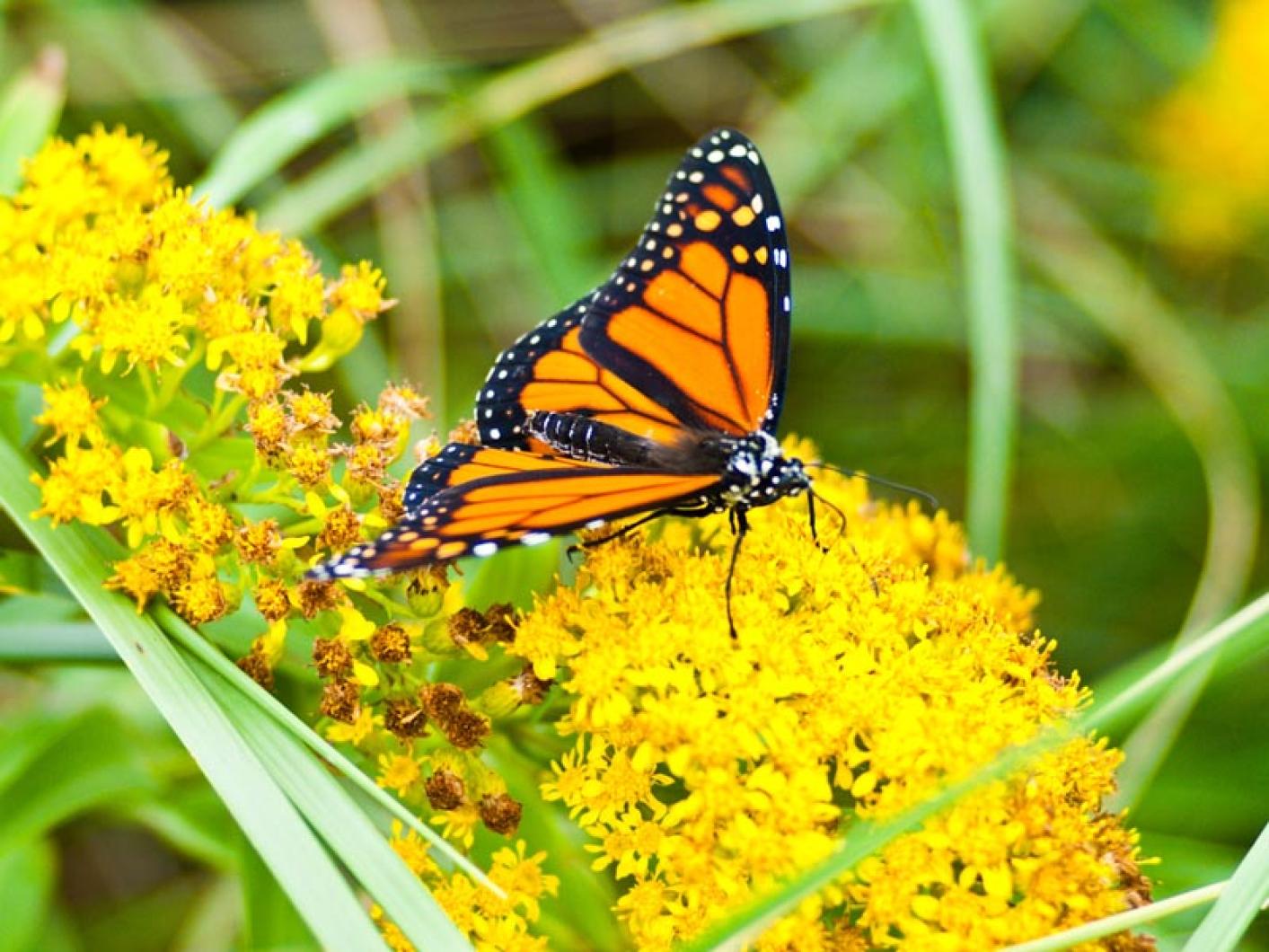Edgartown has a new butterfly oasis and it is not a moment too late. A Davis Lane resident has converted a section of her lawn into a butterfly garden and her efforts mean the world to the monarchs that are fighting for their survival.
Being dramatic is warranted in the case of monarch butterflies whose numbers have plummeted over the last few years. It is hard to believe that a sighting of one of our formerly most common butterflies is now an unusual treat.
The factors that have created this dramatic reduction of monarchs is well documented by scientists and are numerous but not easily overcome.
In Mexican forests, where these butterflies overwinter, a major population decline has been observed over time. The total area occupied by monarch colonies was at a high during the winter of 1996-1997, when 20.97 hectares were covered with these sleeping beauties. From that year, a steadily waning population was observed annually. But last winter’s number was a record, though a sorry one. In the winter of 2013-2014 only 0.67 hectares were observed with resting monarchs, the lowest number recorded ever.
The plight of these flying fancies can be explained simply by a few factors: herbicide tolerant crops in the Midwest, the ethanol mandate, development and weather.
Agricultural technologies have advanced and now certain crops can be engineered for tolerance to herbicide treatments. Corn, soy, rapeseed and cotton are the most common herbicide tolerant crops. The benefit is that farmers can spray herbicides and these resistant varieties will survive, while the weeds surrounding them are killed.
Among those weeds, however, are the milkweeds that monarchs need to survive. Milkweeds are the only plant that the monarch butterflies will lay their eggs on due to the fact that monarch caterpillars only eat milkweed. Formerly row crops were weeded through tillage that allowed a small population of milkweeds to survive and benefit the butterflies. However, the increased use of herbicides guarantee that little if any milkweed survives to provide for the next generation of monarchs.
Another challenge for monarchs is the increase in production of corn and soy products for ethanol. Some years back, Congress passed the Clean Energy Act of 2007 that increased the demand for corn. To maximize the growth of these crops, farmers eliminated hedgerows, narrowed field margins and plowed over grasslands and other habitats that supported migrating monarchs. Since 2008, more than 24 million acres of beneficial monarch habitat has been lost, an amount of land equal to the state of Indiana.
Development of formerly wild landscapes into homes, roads, businesses and shopping areas is also reducing the places that formerly supported monarchs. It has been estimated that in the last 20 years, monarchs have lost approximately 30 per cent of their breeding habitat in this country alone.
And natural factors also are raging against them. Consider that the weather of the last few years has created the perfect storm of difficulties for monarch butterflies. Drought, excessive heat and low temperatures in different areas of the country along the monarch migratory route have made things even more challenging for these unfortunate flyers.
However crushing the bad news, I am always buoyed by the actions of everyday folks who are thinking about the monarch’s plight and doing whatever they can to support the species. Keeping parts of your yard wild and planted with butterfly-friendly species provides oases for these insects.
To adapt Emily Dickinson’s poem title, may I suggest that hope is a thing with wings. Godspeed little monarchs, butterfly lovers everywhere are rooting for your successful voyage and your future survival.
Suzan Bellincampi is director of the Felix Neck Wildlife Sanctuary in Edgartown, and author of Martha’s Vineyard: A Field Guide to Island Nature.







Comments (2)
Comments
Comment policy »